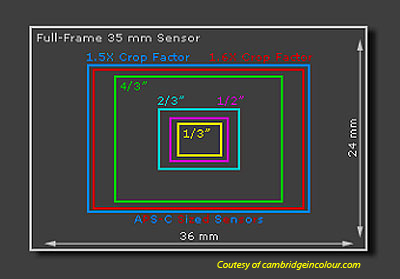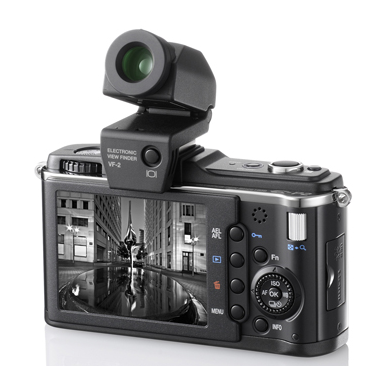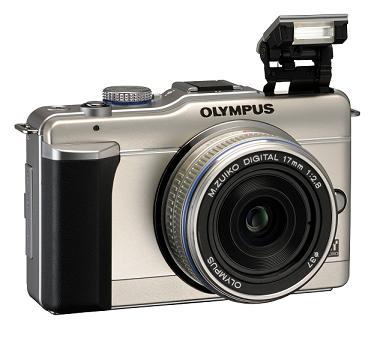
Sarah Island straight from EP-1 JPEG
The idea is not new though, Sigma DP1s are among the first with the concept of small body, big sensor but they are slow in operation and performance. They also do not offer the capability to interchange lens. They are much less versatile compared to the Micro Four Thirds system as we are limited to just one fixed zoom lens.

Sigma DP-1
Since then, the Panasonic GF1 has been added to my family of cameras for my wife as she prefers a camera with flashes and no, the Olympus EP-1 does not have an in-built flash, but you can attach one in the hot shoe. And yes, both The GF1 and EP-1 are sharing the same format and the same lens mount known as Micro Four Thirds (M4/3), meaning u can fit the same lenses on both camera bodies, but for some auto focus may not work.

Spider straight from my wife's GF1 JPEG
By using the technology in both compact digital cameras and DSLRs, the concept is possible by combining them into one body. It has a rather big sensor, not full frame, but a quarter the size of that, namely 4/3 of the size of full frame. The size of full frame sensor is similar to the size of 35mm film, so you get the rough picture. Panasonic and Olympus managed to shrink the camera down The result is a compact camera that produces high image quality with good noise performance and it offers the capability to interchange lens. The format can use almost any lens ever made by any manufacturer... How cool... Well, although 90% of them cannot auto focus, but it is still very interesting to attach old manual lens or new Leica lens (all Leica lens are manual focus haha) This is done by using adapters made by Olympus, Voigtlanders, Novoflex and the list goes on.

4/3 sensor size indicated in green and full frame sensor size indicated in white
Panasonic actually came out with their Micro Four thirds camera before Olympus. Their G1 was the first mirror-less, interchangeable lens with in-built EVF ( Electronic View Finder), but I don't find the size or the appearance to be any different from an entry level DSLR, so it did not get my interest. Since then they released GH2, which is optimised for video as well as still pictures. In a way if you do not own a DSLR, Panasonic offerings may be for you, because the added grip and in-built EVF is a must to have for much serious use. ME? I have a DSLR...
Since then Olympus has also now released EP-2 and EPL-1. Ep-2 is just about the same as EP-1 apart from having the option of the awesome high resolution EVF being able to be attached in the hot shoe, and offering additional art filters. Aesthetically, the EP-2 comes in black whereas the ep-1 comes is silver or white. Now the EPL-1 is a baby version of the EP-X, but it comes with inbuilt flash, a very good thing because apparently the flash can be used as bounce flash. So this means the hot shoe is freed up for the use of again the wonderful optional EVF from Olympus. It is very sad that I can't attach the EVF on my EP-1 though. I will wait for the technology to mature more before replacing my EP-1...!!! (GAS-Gear Acquisition Syndrome kicking in here... haha)

Olympus PEN EP-2

Olympus PEN EP-2 with optional EVF

Olympus PEN EPL-1 with in built flash
So why do I want a DSLR when all my camera needs can be catered by me cute Olympus EP-1? Well, EP-1 is only great for casual photographs. The lens available for the format is still not complete and they are not as fast as the ones offered by DSLRs. Yes, the bodies and lenses are much bigger, but they are also easier to hold and use, ergonomically speaking, very important if you put a big lens on a camera body.
Although the EVFs are catching up, right now, the OVF (Optical View Finders) are still superior for the clarity it gives. On the other hand, EVFs are great as in dark conditions it can brighten up the view and it can provide real time information like depth of field, live histogram or even overlay grids. So EVFs are great for getting it right before shutter is pressed but loses out big time when it comes to clarity.
Performance wise, DSLRs still wins by a mile. Phase detection auto focus offered by DSLRs is still much faster than contrast detection auto focus offered by M4/3. When auto focus speed is a priority, DSLRs are still the way to go. The lens offered by in a DSLR system is much faster (in terms of aperture value) the fastest lens available for M4/3 lens now is the Panasonic 20mm f1.4 prime. I have that and it is awesome. But when it comes to fast standard zooms and telephoto zooms or primes, there is none. The whole reason of the M4/3 is to be compact and these lens have to big to be fast, given current technology, t is impossible for them to be any smaller. So DSLR is the format for me for the use of pro lens with fast aperture, mainly for fast standard zooms and telephoto primes as well as zooms. My wide angle needs are catered by the smaller and lighter M4/3s.
I use Olympus DSLR (Four Thirds) as I think there is nothing like them. I can use their lenses on my Micro Four Thirds cameras again via an adapter. The difference is Four Thirds is a traditional DSLR design with a flip mirror whereas, there is no mirror in a Micro Four Thirds camera. Both formats uses the same sensor in terms of size. I used to think I would use those fast lens on my M4/3 bodies, but I grew out on that idea. It seemed hard to get a good grip and the lenses just would not balance properly on a small m4/3 body. This is also one of the reason why I need a DSLR.
Their cameras are very well built and their flagship cameras have great weatherproofing, providing protection from moisture and dust. Olympus also offers SSWF (Super Sonic Wave Filter) which efficiently shakes of dust from the surface of the sensor. The reason I use Olympus system is used is due to several factors and among them are portability, affordability and lens design. Olympus DSLRs have a sensor a quarter the size of full frame sensor allowing a 2x sensor crop factor ( similar to the M4/3) and this allows for a smaller lens diameter and lighter design to cover the sensor as compared to full frame sensors. This eventually leads to more affordable lens at equivalent effective focal lengths of the full frame sensors. This basically means that their lens can be made faster (smaller aperture value) at a smaller size and at a cheaper cost, except for the f2.0 zoom lens as only Olympus makes f2.0 zoom lens. This is why I am stuck with sub-par Olympus bodies, when I could have gone to Nikon or Canon which have fantastic bodies and sensor technologies.
So, why do you want fast lens? Well, to blur the background and for the low light capabilities of course. I love shallow depth of field or known as subject isolation. It makes the subject pop out from the background. Here are some examples...

My wife shot at 50mm F2.0 ISO 200 (subject is not near, less background blur)

My wife shot at 50mm F2.0 ISO 200 ( subject is near, more background blur)


0 comments:
Post a Comment